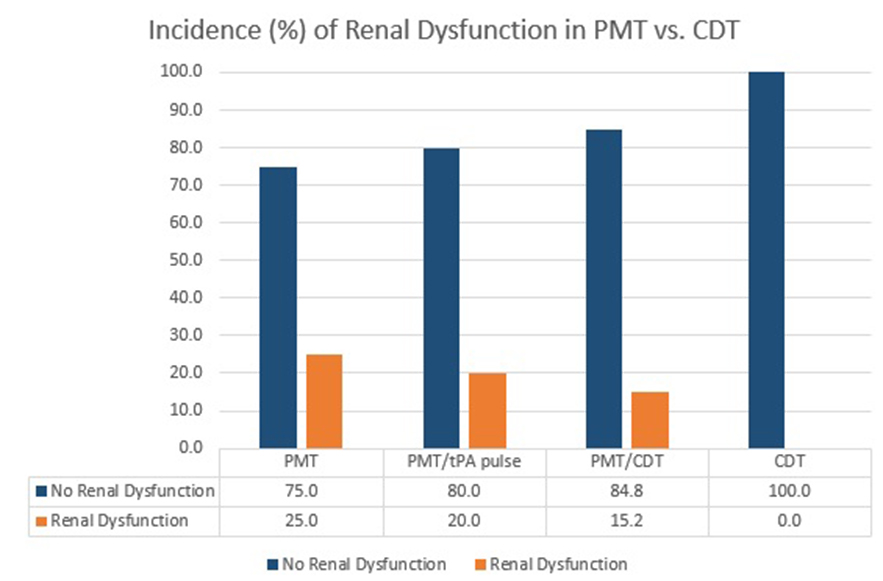Back to 2016 Annual Symposium Abstacts
Increased Risk of Renal Dysfunction with Percutaneous Mechanical Thrombectomy Compared to Catheter-Directed Thrombolysis
Katherine L. Morrow, BS1, Ann Kim, MD2, Steven Plato, MD2, Andrew Shevitz, BS1, Vikram Kashyap, MD2.
1Case Western Reserve University, Cleveland, OH, USA, 2University Hospitals Case Medical Center, Cleveland, OH, USA.
OBJECTIVES:
Percutaneous mechanical thrombectomy (PMT) is regularly used in the treatment of venous and, occasionally, arterial thrombus. While there has been no formal report, PMT has been linked to cases of reversible post-operative acute kidney injury. The purpose of this study is to evaluate the risk of renal dysfunction in patients undergoing PMT vs. catheter-directed thrombolysis (CDT) for treatment of an acute thrombus.
METHODS:
This study is a retrospective review of all patients with a CPT code for PMT or CDT within our medical system from January 2009 to December 2014. Each patient was grouped into the 4 following procedural categories: PMT only, PMT with tPA pulse-spray, PMT with CDT, and CDT only. Pre-operative and post-operative creatinine and GFR values were obtained for each patient. The RIFLE criteria was used to categorize the extent of renal dysfunction based on changes in lab values. A contingency table was created to determine any correlation between incidences of renal dysfunction in PMT versus CDT. Fisher’s exact test was utilized to calculate P value.
RESULTS:
A total of 227 patients were reviewed, of which 82 were excluded due to either existence of preoperative acute kidney injury, history of end stage renal disease, or lack of clinical data. Of the remaining 145 patients, 52 (36%) presented with arterial thrombosis (mean age 62, 56% male) and 93 (64%) presented with venous thrombosis (mean age 49, 45% male). The incidence of renal dysfunction was highest in the PMT group (25%) with lower rates in the PMT/tPA pulse group and PMT/CDT group (Figure 1). CDT was not associated with renal dysfunction. PMT (P=0.04) and PMT/tPA pulse (P=0.05) were associated with higher rates of renal dysfunction than the CDT controls. None of the patients who developed renal dysfunction from PMT progressed to dialysis.
CONCLUSIONS:
The use of PMT as a treatment for vascular thrombosis is associated with renal dysfunction. Patients treated with PMT require postoperative vigilance and renal protective measures.

Back to 2016 Annual Symposium Abstacts
|







